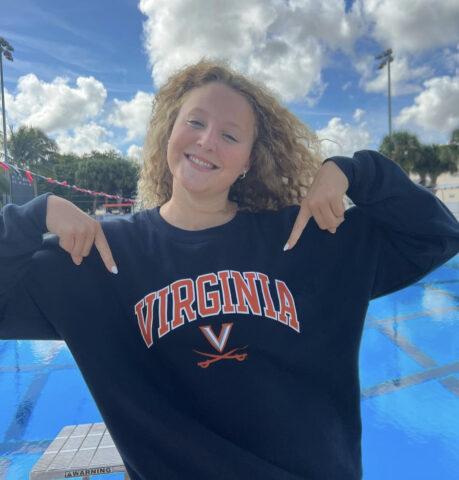
Bill Parcells had a checklist for finding a franchise quarterback. Here is another checklist based on recent history.
The classic Parcells Test for a college quarterback is outdated, and that assumes that it was ever really a thing to begin with (it wasn’t). However, the idea of having a set of objective thresholds for a quarterback is a reasonable one. The last time I tried, looking at all quarterbacks drafted from 2009 to 2018, I came up with the following test:
Playing around with the numbers, my rough cut is that I want a player with at least 9000 passing yards, an average of at least 20 rushing yards per game, and an interception rate between .33 and .67 per game.
Going back over the 2021 class of first-round, only Trevor Lawrence passed this test. The model showed the most concern about Mac Jones (failed all three markers), followed by Justin Fields and Trey Lance (failed two of the three markers). Zach Wilson was short on passing yards only, but that was also the most important criterion. Given how 2021 turned out, it’s tempting to call those guidelines complete. They seem to fit the performances given to the New England Patriots, the Chicago Bears, and the San Francisco 49ers, at least.
However, the model itself feels incomplete. A number of successful quarterbacks fail this test. Justin Herbert and Tua Tagovailoa fail the rushing yards per game measure while Joe Burrow, Jordan Love, and CJ Stroud fail the passing yards measure. The desire for interceptions was a crude way of measuring aggression and adversity, but I wasn’t happy with how it punished quarterbacks who were simply good. With more time with the numbers, and with a focus just on the quarterbacks given a high grade from 2011-2020, I want to mimic the spirit of the original Parcells test as much as possible. Then, after building the model, I wanted to apply it to the quarterback classes since 2021 to see if any lessons can be learned for 2024.
1). You Want Experience
Looking back at the numbers from 2011-2020, it seems obvious that the passing yards requirement was too high at 9,000 yards; it seems likely that an 8,500-yard limit is as functional. This is sufficient to cut the group almost exactly in half. Remember that this is not a measure of the quarterback’s ability, but rather a measure of the quarterback’s playing time. Yards correlate pretty well with games, pass attempts, and earning the trust of a coaching staff to continue throwing the rock. That brings me to the second measure.
2). You Want an Aggressive Passer
Quarterbacks who are not challenged in college, or who only play within themselves, might struggle when they hit the pros. This doesn’t mean that they are inferior players, because they likely did everything asked of them in their systems. However, when they then hit the pros, even the most quarterback-friendly system around becomes challenging. For this metric, I want to see a player who averages at least 8 yards per pass attempt and at least two passing touchdowns per game. This might seem like a modest cutoff, but it winnows the field brutally. Of the 39 quarterbacks taken in the first two rounds from 2011-2020, only 13 (one-third) pass this test.
3). You Don’t Want a Hero
By contrast, a player who tries to do too much without getting results is a problem, as is a player who is too reliant on his legs in college. Of all of the measures developed for the test, this is the most complicated–but it is also the one that has the most overlap.
The player in question should have an interception rate lower than 2.5%, indicating that he doesn’t take unnecessary risks. He should average at least 2.5 yards per rush attempt, which is a way of checking against a player who takes too many sacks (based on how college stats are recorded. Finally, no more than 10% of his accumulated yards should come from rushing (indicating that he is a dedicated passer as opposed to a college athlete who can also pass).
In testing, it didn’t work to count each of these boxes as a distinct element of failure, because whether they overlapped or not, they had only about the same amount of relationship with success or failure collectively as one of the other measures. I was also not entirely comfortable with the rushing yards measure, so I cross-checked it against both of the other two measures and could find an argument for waiving this (and only this) measure from the hero test if the quarterback in question passed both of the other measures–but that mostly just shows that the “hero” metric in general is less important than the other two.
Tiers of Concern
High Concern: From 2021-2024, here are the prospects who miss all three markers, followed by the number of times in their careers to date they have managed to post an indexed passer rating at 100 or higher: Trey Lance (0/3), Justin Fields (0/3), and Mac Jones (1/3). Of note, none of the top prospects in this upcoming draft fail all three measures.
Moderate Concern: Here are the prospects who missed two of the three markers, again followed by the number of times in their careers to date that they have been above-average: Zach Wilson (0/3), Jordan Love (1/3), Kyle Trask (0/3), and Kenny Pickett (0/2). Also on this list are CJ Stroud and Bryce Young. Both only pass the aggression marker, though Stroud passes it to a higher degree (an extra yard per passing attempt and an extra 0.77 passing touchdowns per game.
Meanwhile, here are the top prospects in this upcoming draft who fail two measures: Drake Maye, Jayden Daniels, Bo Nix, J.J. McCarthy, and Michael Penix. Of particular note among these five is J.J. McCarthy, who only passes the “hero” test, which is arguably the least important of the three. By contrast, Maye (like Stroud and Young) passes the aggression marker, which might turn out to be the most important.
Mild Concern: No recent prospects (and none of the top members of the 2024 class) fail only a single measure.
Least Concern: Only two recent prospects pass all three metrics. The first is Trevor Lawrence and the second is Caleb Williams. In the current era, they join Andrew Luck, Patrick Mahomes, Baker Mayfield, and Joe Burrow in that regard.
Conclusions
Contrary to popular belief, drafting a quality quarterback is not purely matter of luck. It is still, perhaps, a “crapshoot” in the sense that it can seem like luck but actually has odds that can be played to seek more favorable outcomes. With respect to the 2024 class, it’s worth pointing out that Maye, especially, could end up more like CJ Stroud and less like Bryce Young (to date), in that he only misses some of these marks by a small degree—he has 8018 yards and fails only the part of the hero test based on his reliance on his legs, for example. Based purely on this test, he should probably be the second quarterback off the board.
However, this draft class also does have a single quarterback who passes the old version of the test and this new version, becoming first top prospect since Trevor Lawrence to do so—Caleb Williams.



















You must be logged in to post a comment Login